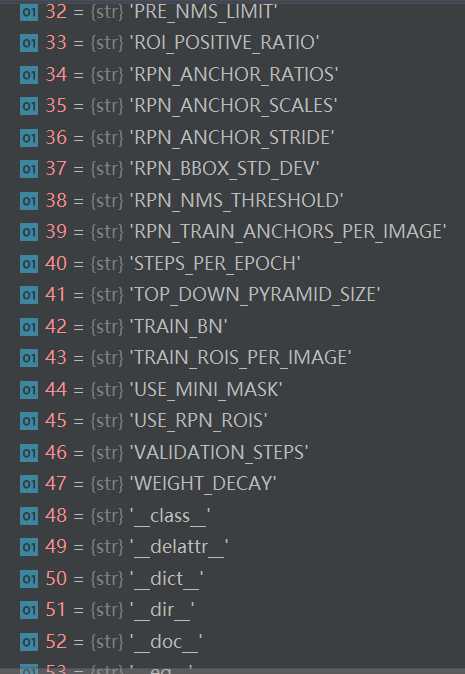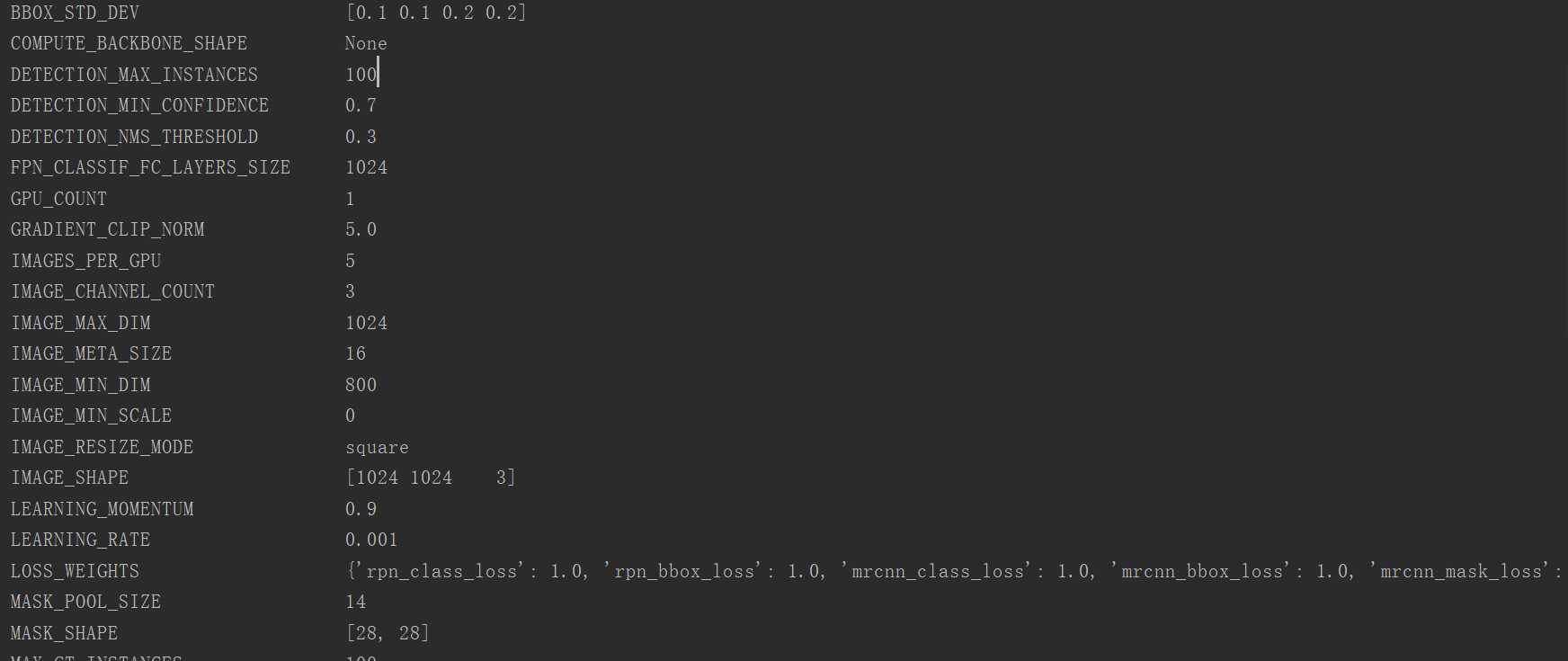mask-rcnn代码解读:display(self)函数的解析
Posted tangjunjun
tags:
篇首语:本文由小常识网(cha138.com)小编为大家整理,主要介绍了mask-rcnn代码解读:display(self)函数的解析相关的知识,希望对你有一定的参考价值。
如和将class中定义的变量打印或读取出来,受maskrcnn的config.py的启示,我将对该函数进行解释。
我将介绍该函数前,需要对一些名词进行解释,如下:
①Ipython:ipython是一个python的交互式shell,比默认的python shell好用得多,支持变量自动补全,自动缩进,支持bash shell命令,内置了许多很有用的功能和函数。学习ipython将会让我们以一种更高的效率来使用python。同时它也是利用Python进行科学计算和交互可视化的一个最佳的平台。
②dir():函数不带参数时,返回当前范围内的变量、方法和定义的类型列表;带参数时,返回参数的属性、方法列表。如果参数包含方法__dir__(),该方法将被调用。如果参数不包含__dir__(),该方法将最大限度地收集参数信息。如下返回属性变量:


③.startswith():此函数判断一个文本是否以某个或几个字符开始,结果以True或者False返回。
text=‘welcome to qttc blog‘
print text.startswith(‘w‘) # True
print text.startswith(‘wel‘) # True
print text.startswith(‘c‘) # False
print text.startswith(‘‘) # True
顺道介绍endswith():此函数判断一个文本是否以某个或几个字符结束,结果以True或者False返回。
text=‘welcome to qttc blog‘
print text.endswith(‘g‘) # True
print text.endswith(‘go‘) # False
print text.endswith(‘og‘) # True
print text.endswith(‘‘) # True
print text.endswith(‘g ‘) # False
④getattr(self, a):返回一个对象属性值,即变量的值
def display(self):
"""Display Configuration values."""
print(" Configurations:")
for a in dir(self): # dir() 函数不带参数时,返回当前范围内的变量、方法和定义的类型列表;带参数时,返回参数的属性、方法列表
if not a.startswith("__") and not callable(getattr(self, a)): # getattr() 函数用于返回一个对象属性值
print("{:30} {}".format(a, getattr(self, a)))
print(" ")
在maskrcnn中,执行此代码运行结果为:

以上是关于mask-rcnn代码解读:display(self)函数的解析的主要内容,如果未能解决你的问题,请参考以下文章